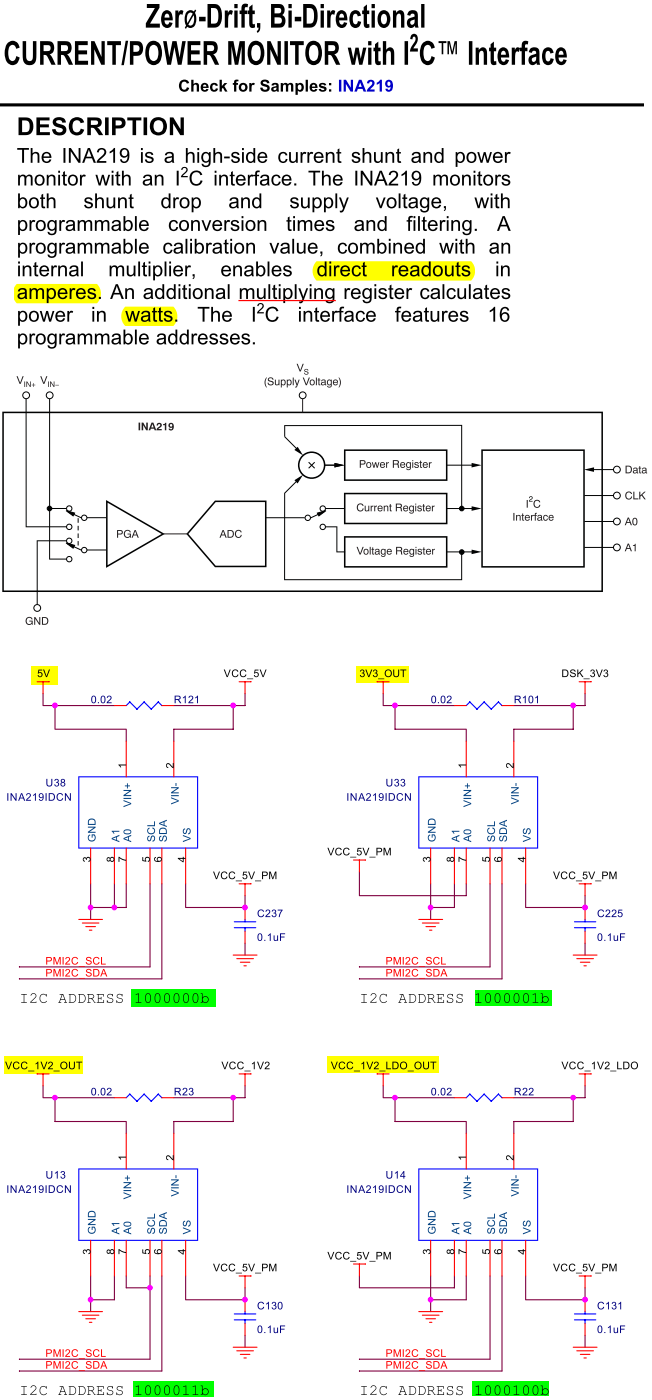Hi,
I would like to ask a question on voltage / current / power monitoring on using INA219.
I am building a board using OMAP L138, and wonder how current and voltage can be precisely monitored on different power domains (split planes, etc.). I initially thought that some sophisticated lab instrument and wiring/plugging might be needed to measure them, however I later found a group of power-current monitors on a board I am referencing (SpectrumDigital EVMAM1808 schematics, sheet 36) that could possible solve the monitoring problem:

The INA219 current and power monitor has internal current, voltage and power registers, and seems is ideally suited for monitoring board power consumption. From the corresponding schematic page, different INA219's are connected to different power outputs of TPS65070 outputs:
|
Three step-down converters outputs |
3V3_OUT VCC_IO_3V3_1V8_OUT VCC_1V2_OUT |
|
Two LDO outputs |
VCC_1V2_LDO_OUT VCC_1V8_LDO_DOUT |
And there are two other INA219's monitoring 5V and 1V2_RTC_OUT net current and power. Seven INA219's in total.
So it seems that with the equipment of these INA219's, from whom the processor can read current, voltage and power monitoring register results, the problem of precisely and delicately measuring board power consumption is largely solved. Even if individual devices cannot be measured separately, we at least still have knowledge of each different voltage domains. And there is no need, perhaps, to have sophisticated lab instrument in order to monitor the board power parameters.
So is this the purpose of the INA219's on that EVM board (SpectrumDigital EVMAM1808, see above)? And is this what INA219 is designed for?
Zheng
